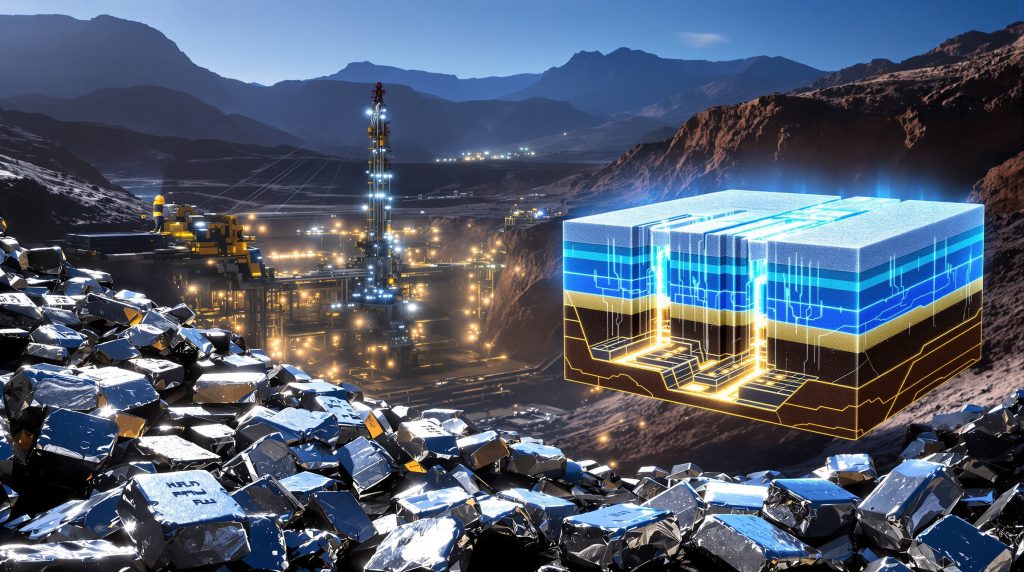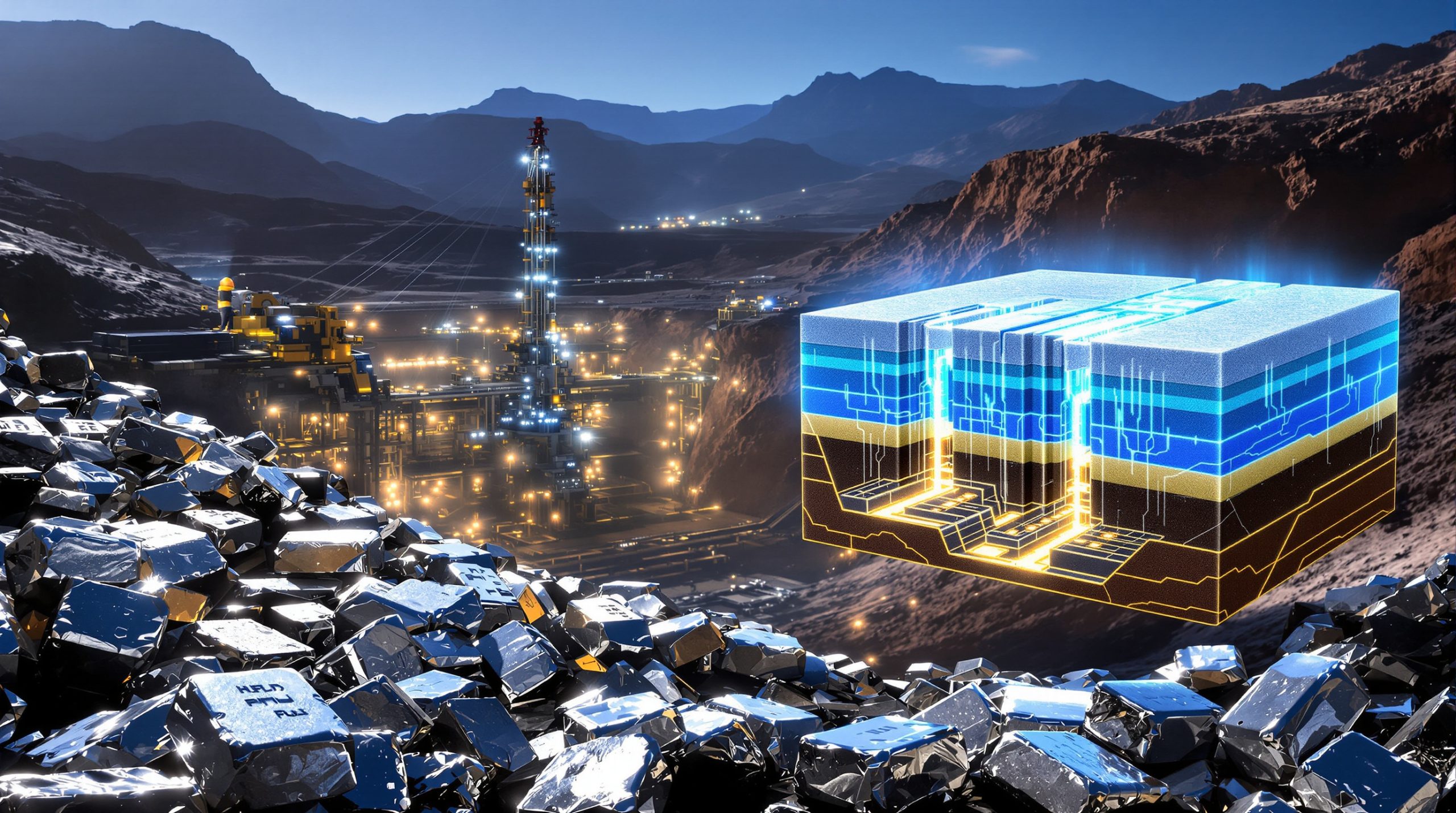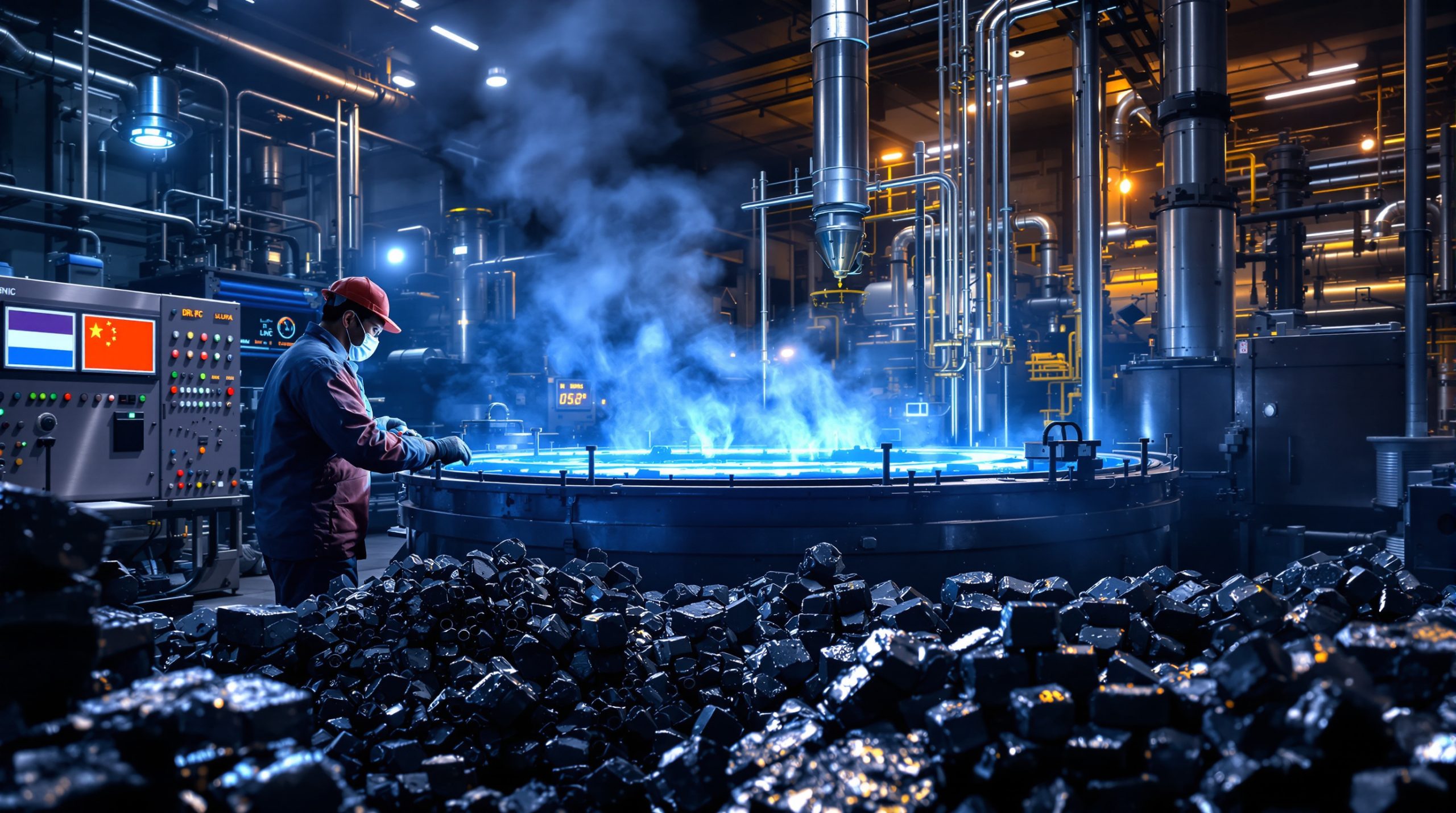Underground Platinum Mining: A $547 Million Investment in Future Supply
The platinum group metals (PGMs) sector is witnessing a significant shift as major producers transition from open-pit to underground mining operations. This strategic pivot reflects both resource depletion in existing surface operations and growing confidence in PGMs' long-term demand outlook despite electric vehicle adoption. Underground mining represents the next frontier for sustainable platinum production, offering access to deeper, often higher-grade deposits that can remain economically viable for decades.
According to industry reports, South Africa's platinum sector has experienced significant infrastructure decline, with the number of PGM shafts falling to 53 from 81 in 2008. This infrastructure reduction emphasizes the urgent need for new development projects to maintain supply continuity.
The Economics of Underground PGM Mining
Underground operations typically require higher initial capital investment compared to open-pit mines but can access richer ore bodies at depth. These projects generally feature extended mine life projections, often exceeding 20 years, which provides stability for both producers and downstream industries relying on consistent PGM supply.
The underground mining approach also offers operational advantages through mechanization opportunities that weren't possible in traditional mining methods. While requiring sophisticated engineering solutions, these mechanized systems can significantly improve worker safety, production efficiency, and resource recovery rates.
Another notable benefit of underground operations is their substantially reduced surface environmental footprint compared to open-pit alternatives, which can require extensive land disturbance and waste rock management. Furthermore, these operations can incorporate mine reclamation innovations that facilitate better land rehabilitation after mining activities conclude.
How Does Tharisa's $547 Million Underground Project Transform PGM Mining?
Tharisa Plc's recently announced $547 million investment represents one of the most significant commitments to underground platinum mining in recent years. This decade-long development plan will transform their existing open-pit operation on South Africa's mineral-rich Bushveld Complex into a sophisticated underground mine with enhanced production capabilities.
As Tharisa CEO Phoevos Pouroulis explained, "The underground project is the natural progression for our operations and has been established to increase the life-of-mine development to access the multi-generational mineral resource base." This statement underscores the strategic long-term thinking behind the substantial capital commitment.
Key Project Milestones and Specifications
- Timeline: 10-year development plan with first ore expected Q2 2026 from the first of two shafts
- Investment: $547 million total capital expenditure
- Production Target: At least 200,000 ounces of PGMs annually at steady state
- Secondary Output: More than 2 million metric tons of chrome concentrate yearly
- Technology: Fully mechanized underground mining systems
- Location: Extension of existing Tharisa mine on the Bushveld Complex
This production represents a significant increase from Tharisa's current output projections for the 2025 financial year, which stand at 140,000-160,000 ounces of PGMs and 1.65-1.8 million tons of chrome concentrates.
Technological Innovations Driving Efficiency
The project will incorporate advanced mechanized mining techniques that promise to enhance operational efficiencies, lower production costs, and increase overall output. These technological innovations reflect the industry's adaptation to changing market conditions and operational challenges.
Modern underground platinum mines increasingly utilize sophisticated shaft systems for efficient ore transport, state-of-the-art drilling and extraction equipment, and advanced geological modelling to enhance both safety and productivity.
Why Are PGMs Considered Critical to the Clean Energy Transition?
Despite initial concerns about platinum demand declining with the rise of battery electric vehicles, industry leaders are betting on PGMs' crucial role in alternative clean energy applications. The metals' unique catalytic properties position them as essential components in several emerging technologies.
Industry experts have noted that despite the growth in electric vehicle usage potentially threatening traditional automotive catalyst applications, PGMs remain "critical metals and minerals that the world has realized are a necessity to transition to a future world." This recognition has helped stabilize long-term investment outlook despite near-term market volatility.
PGM Applications in Green Technologies
-
Hydrogen Fuel Cells: Platinum catalysts enable efficient hydrogen-to-electricity conversion, serving as a cornerstone technology for heavy transport, shipping, and stationary power applications
-
Green Hydrogen Production: PGMs catalyze water electrolysis for hydrogen generation, with platinum and iridium playing key roles in PEM electrolyzers
-
Industrial Decarbonization: Catalytic processes using PGMs reduce emissions in manufacturing, particularly in chemical production and refining operations
-
Emission Control Systems: Continued use in catalytic converters for internal combustion and hybrid vehicles, which are projected to maintain significant market share through at least 2040
-
Energy Storage: Emerging applications in next-generation battery technologies including metal-air batteries and flow battery systems
The versatility of PGMs across multiple clean energy applications provides a degree of market resilience that single-application metals lack, potentially insulating producers from sector-specific downturns. The critical minerals transition is creating new demand streams for PGMs beyond traditional uses.
What Makes South Africa's Bushveld Complex the Global PGM Powerhouse?
The Bushveld Complex remains the world's primary source of platinum group metals, hosting approximately 75% of global platinum reserves and producing the majority of newly mined supply. This geological formation's unique characteristics create both opportunities and challenges for mining operations.
Located in northeastern South Africa, the Bushveld Complex represents a geological marvel – the world's largest known layered igneous intrusion, formed approximately 2 billion years ago. Its extraordinary mineral wealth stems from its formation process, which concentrated PGMs and chromium in distinct, mineable layers.
Geological Characteristics of the Bushveld Complex
- World's largest layered igneous intrusion spanning approximately 65,000 square kilometers
- Three primary platinum-bearing reefs (Merensky, UG2, Platreef) with distinct mineralogical characteristics
- Consistent mineralization extending to significant depths, in some areas exceeding 2 kilometers
- Co-occurrence of multiple valuable minerals (platinum, palladium, rhodium, chrome) enhancing project economics
- Challenging mining conditions requiring specialized techniques, particularly in UG2 reef extraction
The Bushveld's geological stability and predictable reef structures make it ideally suited for long-term mining investments, despite operational challenges including high temperatures at depth and complex ground control requirements.
How Does Underground Mining Compare to Open-Pit PGM Operations?
The transition from open-pit to underground mining represents a fundamental shift in operational approach, with significant implications for productivity, costs, and environmental impact.
Underground mining typically requires higher initial capital investment but can deliver superior economic returns over the life of mine through access to higher-grade ore and reduced waste material handling. The comparative advantages shift depending on deposit depth, ore grade, infrastructure requirements, and market conditions.
Comparative Analysis of Mining Methods
| Factor | Open-Pit Mining | Underground Mining |
|---|---|---|
| Capital Costs | Lower initial investment | Higher upfront capital requirements |
| Operating Costs | Higher waste-to-ore ratio | Lower waste handling, higher labor costs |
| Production Rate | Typically higher volumes | More selective, potentially higher grade |
| Resource Recovery | Limited to shallow deposits | Access to deep, high-grade resources |
| Environmental Footprint | Larger surface disturbance | Reduced surface impact, higher energy use |
| Safety Considerations | Weather exposure, slope stability | Ventilation, ground support, confined spaces |
| Operational Flexibility | Easier to expand/contract | Less adaptable to market fluctuations |
The decision to transition from open-pit to underground operations typically occurs when the economic strip ratio (waste-to-ore) becomes unfavorable as pit depth increases, or when higher-grade ore bodies are identified at depths beyond practical open-pit mining limits.
What Are the Key Challenges in Developing Underground Platinum Mines?
While underground mining offers significant advantages for accessing deep PGM deposits, these projects face unique technical, financial, and operational challenges that must be overcome to ensure success.
Underground platinum mining projects typically require 5-10 years from initial planning to full production, creating extended periods of capital deployment before revenue generation begins. This timeline introduces significant financial risk, particularly in volatile commodity markets, and requires robust project management to control costs and maintain schedules.
Critical Development Hurdles
- Capital Intensity: High upfront investment requirements before production begins, often exceeding $500 million for major projects
- Technical Complexity: Specialized engineering for shaft systems, ventilation, and ground support in challenging geotechnical environments
- Operational Risks: Managing heat, water ingress, and rock stability at depth, with temperatures potentially exceeding 50°C in deep workings
- Skilled Labor Requirements: Need for specialized underground mining expertise in increasingly competitive labor markets
- Timeline Considerations: Longer development periods before reaching full production, creating extended payback periods
- Energy Dependencies: Higher electricity demands for ventilation, cooling, and hoisting, with power costs representing up to 25% of operating expenses
Successful underground PGM projects must incorporate comprehensive risk management strategies, including phased development approaches, technological innovation, and operational flexibility to adapt to changing market conditions. Additionally, understanding mining transformation trends is crucial for long-term project viability.
How Is the Global PGM Supply Landscape Evolving?
The development of new underground platinum mines occurs against a backdrop of significant changes in the global PGM supply-demand balance, with implications for market dynamics and pricing.
Industry data indicates that miners have been wary of developing new platinum mines due to concerns about electric vehicle adoption potentially reducing traditional automotive catalyst demand. This cautious approach to capital investment has contributed to a constrained supply pipeline, with limited new projects advancing to construction.
Current State of Global PGM Production
- Concentration of production in South Africa (70-75% of global platinum), creating geopolitical supply risk
- Limited new mine development in recent decades, with declining capital expenditure across the sector
- Declining output from aging operations, particularly older shaft systems in the Eastern Bushveld
- Growing importance of recycling as a secondary supply source, providing approximately 30% of annual platinum supply
- Emergence of Zimbabwe as a significant producer, despite challenging operating environment
The combined effect of these factors suggests potential supply constraints in the medium term, particularly for specific PGMs like rhodium and iridium that have limited production sources and growing industrial applications.
Future Supply Projections
- Declining production from traditional open-pit operations as resources deplete and strip ratios increase
- Growing contribution from underground mines by 2030, with new projects like Tharisa's development coming online
- Potential supply constraints as transition periods overlap between closing surface operations and ramping up underground production
- Increased production costs affecting market pricing, establishing higher price floors necessary for capital recovery
- Greater supply diversification with new projects in Zimbabwe and elsewhere reducing South Africa's market dominance
These supply dynamics, coupled with emerging demand from hydrogen and other clean energy applications, create a complex but potentially favorable market environment for new underground PGM projects with competitive cost structures.
What Other Major Underground PGM Projects Are in Development?
Tharisa's underground initiative joins a select group of significant PGM projects currently under development globally, each with unique characteristics and potential impacts on future supply.
The limited number of greenfield PGM mine developments underscores the industry's cautious approach to capital deployment, with Reuters reporting that Tharisa's project represents "just one of two greenfield mine development projects in the platinum industry, along with Ivanhoe's Platreef mine in South Africa."
Notable Underground PGM Developments
-
Ivanhoe Mines' Platreef Project: Large-scale mechanized mine in South Africa targeting 700,000 ounces of PGMs annually when fully developed, with phased production approach and industry-leading cost structure
-
Tharisa's Karo Mining Project: 226,000 ounce-per-year open pit operation in Zimbabwe with potential underground extensions, representing a geographic diversification of Tharisa's production base
-
Northam Platinum's Expansion Projects: Multiple underground developments across their South African operations, including the Booysendal and Zondereinde mines, focusing on UG2 and Merensky reef extraction
-
Anglo American Platinum's Mogalakwena Underground: Feasibility studies for underground extensions beneath their flagship open pit, potentially accessing higher-grade resources at depth
These projects represent the next generation of PGM supply, incorporating advanced technologies and operating practices to address both economic and sustainability challenges in increasingly complex operating environments.
How Do Underground PGM Mines Support Sustainable Development Goals?
Modern underground platinum mining projects increasingly incorporate sustainability considerations into their design and operation, addressing environmental, social, and governance (ESG) priorities.
The transition to underground mining offers several inherent sustainability advantages, including substantially reduced land disturbance, decreased waste rock generation, and lower visual impact compared to open-pit operations. However, underground mines typically consume more energy for ventilation, cooling, and ore hoisting, creating different environmental challenges that require technological solutions.
Sustainability Features in Next-Generation PGM Mines
-
Reduced Surface Footprint: Minimized land disturbance compared to open-pit operations, preserving biodiversity and reducing rehabilitation requirements
-
Water Management: Advanced recycling and treatment systems that minimize freshwater consumption and eliminate discharge to natural water courses
-
Energy Efficiency: Optimized ventilation and pumping systems incorporating variable speed drives, heat recovery, and smart controls to reduce power consumption
-
Community Development: Skills training and local procurement opportunities creating sustainable economic benefits beyond direct employment
-
Automation: Improved safety through reduced human exposure to hazardous conditions, while creating higher-skilled employment opportunities
-
Biodiversity Protection: Preservation of surface ecosystems through underground access, reducing habitat fragmentation and enabling concurrent land uses
These sustainability initiatives align underground PGM projects with global ESG standards and investor expectations, potentially improving both social license to operate and access to capital for mine development.
What Does the Future Hold for Platinum Investment?
The significant capital commitments to new underground platinum mines signal confidence in the metal's long-term prospects despite near-term market uncertainties.
Industry leaders like Tharisa CEO Phoevos Pouroulis have emphasized that PGMs remain "critical metals and minerals that the world has realized are a necessity to transition to a future world," highlighting the sector's strategic importance beyond traditional automotive applications.
Investment Outlook Factors
- Growing industrial applications beyond traditional automotive use, particularly in hydrogen technologies and electronics
- Potential supply constraints as older mines deplete and limited new projects come online
- Strategic importance of PGMs in green energy technologies, reinforced by government policies supporting hydrogen adoption
- Increasing production costs supporting price floors, with all-in sustaining costs establishing effective minimum market prices
- Geopolitical considerations regarding critical mineral supply chains, with Western economies seeking supply diversification
These factors create a complex but potentially favorable environment for platinum investment, particularly in projects with competitive cost structures and long operational lives. The industry evolution trends suggest continued technological advancement will be crucial for competitiveness.
Market Indicators to Monitor
- Hydrogen economy development pace, particularly in heavy transport, shipping, and industrial applications
- Automotive industry transition timelines, including hybrid vehicle adoption rates and internal combustion engine regulations
- Recycling rates and secondary supply growth, which could moderate primary production requirements
- Production costs across major mining regions, establishing effective price floors
- Technological innovations affecting PGM demand intensity, including catalyst thrifting and substitution research
Investors in underground platinum projects should adopt a long-term perspective aligned with these operations' multi-decade lifespans, focusing on projects with robust economics across various price scenarios and potential market evolutions.
FAQs About Underground Platinum Mining Projects
How long does it take to develop an underground platinum mine?
Underground platinum mines typically require 5-10 years from initial planning to full production. The development timeline includes feasibility studies, permitting, shaft sinking, lateral development, and infrastructure construction. Tharisa's project is expected to deliver initial ore in Q2 2026, with full production capacity reached several years later.
What are the environmental advantages of underground versus open-pit mining?
Underground mining generally has a smaller surface footprint, reduced waste rock generation, and lower visual impact compared to open-pit operations. However, underground mines typically consume more energy for ventilation, cooling, and ore hoisting. Modern underground platinum mines incorporate extensive water recycling systems and energy efficiency measures to minimize environmental impacts.
How do platinum group metals contribute to clean energy technologies?
PGMs serve as critical catalysts in hydrogen fuel cells, enabling the efficient conversion of hydrogen to electricity with only water as a byproduct. They're also essential in green hydrogen production through water electrolysis, industrial emission reduction technologies, and advanced energy storage systems. These applications position PGMs as important contributors to decarbonization efforts despite declining use in conventional catalytic converters.
What factors determine the economic viability of an underground platinum mine?
Key economic factors include ore grade and thickness, depth of mineralization, rock stability conditions, infrastructure requirements, energy costs, labor availability, and market prices for platinum group metals and byproducts like chrome. Projects with multiple revenue streams (such as Tharisa's PGM and chrome production) typically have more robust economics across market cycles.
How does mechanization impact underground platinum mining?
Mechanization in underground platinum mining improves safety by removing workers from hazardous areas, increases productivity through continuous operations, enhances resource recovery through precision mining techniques, and potentially reduces operating costs through labor efficiency. Tharisa's planned underground operation will employ advanced mechanized mining methods to achieve targeted production rates.
Ready to Track the Next Major Platinum or Mineral Discovery?
Discovery Alert's proprietary Discovery IQ model provides instant notifications when significant discoveries are announced on the ASX, transforming complex mineral data into actionable investment insights. Visit our discoveries page to understand why major mineral discoveries can lead to exceptional returns and begin your 30-day free trial today.




